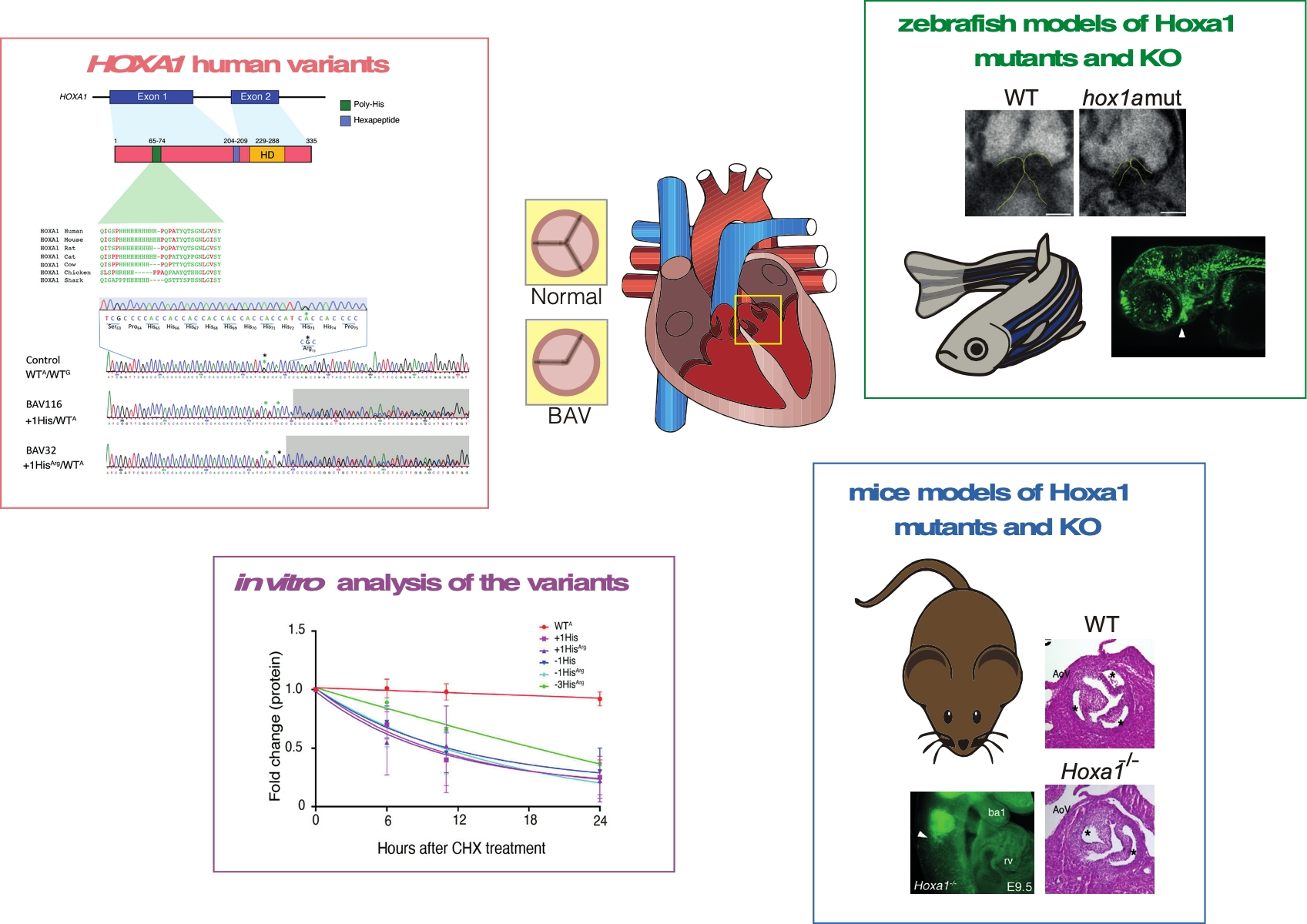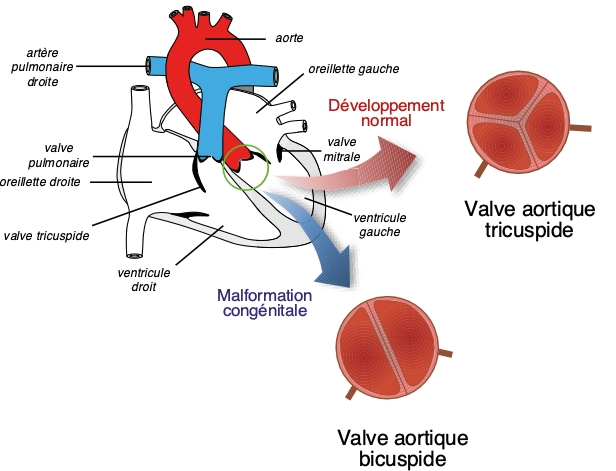DECIPHERING THE CAUSES OF CONGENITAL HEART DEFECTS
IDENTIFICATION DE NOUVEAUX VARIANTS ASSOCIÉS À LA BICUSPIDIE AORTIQUE
La valve aortique cardiaque située au début de l’aorte (l’artère qui conduit le sang du cœur vers le reste du corps) comporte trois feuillets. Il arrive cependant, chez certaines personnes, qu’elle n’en compte que deux : on parle alors de bicuspidie aortique. C'est une des malformations congénitales les plus fréquentes, touchant plus d'1% de la population. Si la majorité des porteurs de bicuspidie vivent normalement, 30% de ces personnes vont développer une dysfonction valvulaire précoce. Néanmoins, les mécanismes embryonnaires en jeu et les déterminants génétiques de cette pathologie restent mal connus.
Un travail collaboratif mené par le Dr Stéphane Zaffran impliquant des équipes de l'Université Aix-Marseille, de l'IGF à Montpellier (équipe animée par Chris Jopling), de Université catholique de Louvain et de l'Institut du Thorax à Nantes, a permis d'identifier des mutations du gène HOXA1 chez des patients atteints de bicuspidie aortique. A l'aide d'une combinaison d'approches incluant le poisson-zèbre, la souris, des tests in vitro et de la génétique humaine, cette étude, publiée dans Nature Communications, a montré que la protéine HOXA1 joue un rôle dans la migration des cellules de la crête neurale, un processus essentiel à la bonne formation des feuillets aortiques. Les mutations identifiées chez les patients conduisent à la production de variants dominants-négatifs, démontrant que la réduction de l'activité de la protéine HOX1A contribue au phénotype de bicuspidie aortique.

Les variants HOXA1 identifiées chez des patients porteurs de bicuspidie aortique ont été testés in vitro et chez des modèles poissons-zèbres et murins permettant d’analyser la forme des valves et la migration des cellules de la crête neurale.
...................................................................................................................................................................................................................................................................................................................................................................
NEW HOX1A VARIANTS ASSOCIATED WITH BICUSPID AORTIC VALVES
The aortic valve, which regulates the circulation of blood from the heart to the rest of the body, has three leaflets. In some people, however, it has only two leaflets: this is called Bicuspid Aortic Valve (BAV). It is one of the most frequent congenital malformations, affecting more than 1% of the population. While the majority of BAV carriers live normal lives, 30% of these individuals will develop early valve dysfunction. Nevertheless, the embryonic mechanisms involved and the genetic determinants of this pathology remain poorly understood.
A collaborative study led by Dr Stéphane Zaffran involving teams from the University of Aix-Marseille, the IGF in Montpellier (team headed by Chris Jopling), the Catholic University of Louvain and the Thorax Institute in Nantes, has identified mutations in the HOXA1gene in patients with BAV. Using a combination of approaches including zebrafish, mice, in vitro assays and human genetics, this study, published in Nature Communications, showed that the HOXA1 protein plays a role in neural crest cell migration, a process that is essential for the proper formation of aortic leaflets. The mutations identified in patients lead to the production of dominant-negative variants, demonstrating that reduced HOXA1 activity contributes to the BAV phenotype.

HOXA1 variants identified in patients with bicuspid aortic valve were tested in vitro and in zebrafish and mouse models to analyze valve shape and neural crest cell migration.






